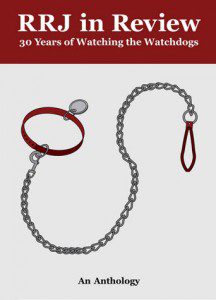The Last Days of Eric Malling
The spectacular rise and drunken fall of a great contrarian
An early Sunday evening in Toronto. The rain that fell throughout the day is starting to let up, and Eric Malling has the house to himself. His son, Leif, is away at university, his wife, Pat Werner, is out of town and his daughter, Paige, is at her job at a local drugstore. It’s late September 1998 and Malling has grudgingly faded from public view. Two years earlier, CTV fired him as host of W5 – the same show he once helped to save. Malling still hasn’t recovered from the shock. He aches to be back in the limelight, to once again have a regular platform for his acerbic perspectives on current events. He does, however, have a few documentary projects in the works, which go some way toward soothing the pain and giving him an answer for the often-asked question “What are you doing now?” Indeed, he would have spent part of this day preparing for a Monday meeting with Dick Nielsen, an independent producer, if the session hadn’t been rescheduled for Tuesday. Now, with some unexpected free time, he pads around the house and decides to head to the basement, to its spare bedroom and makeshift office, the place where Malling, an alcoholic, does most of his drinking. As he begins his descent, steps he’s taken countless times before, he trips. If there’d been a railing on the open side of the staircase, he might have been able to grab it and break his fall. Instead, he crashes down and is knocked unconscious.
Later that evening, an acquaintance passing by notices that the front door to Malling’s house is open. Concerned, the acquaintance walks up to the house, calls out, goes inside and discovers Malling at the bottom of the basement stairs. Within minutes, an ambulance takes him to Sunnybrook Hospital, where a day later, on September 28, Eric John Malling, age 52, dies of a brain hemorrhage.
In the weeks that follow, there’s much public praise for Canada’s most famous journalist-contrarian. “I was at his funeral and the who’s who of journalists showed up. Why? Because they respected that kind of audacity,” says reporter Susan Ormiston, who worked with Malling at W5 and saw him at his worst and best. Among his career accomplishments: one Gemini and six ACTRA awards, three Gordon Sinclair awards for excellence in broadcast journalism, and the infamous tainted-tuna story for the fifth estate in 1985, which led to the resignation of Federal Fisheries Minister John Fraser. But the qualities that fuelled Malling’s rise also became his undoing. Opinionated, controlling and stubborn, often called an asshole, he refused to believe he was ever wrong about a story – or that he had a problem with alcohol.
When Eric Malling first headed east from his home province of Saskatchewan and the Regina Leader-Post for The Toronto Star, his main goal was to grab front-page bylines. Over five years, 1969 to 1974, there were many, but the one that indirectly led to TV Stardom was on the invocation of the War Measures Act during the FLQ crisis in 1970. The piece caught the attention of a man who’d already become a journalistic legend, Ron Haggart. Haggart would go on to help fashion the fifth estate, but at the time was working on a book called Rumours of War. “I thought Malling had a hold on the situation and the events that went beyond the drama and the rhetoric of the time,” says Haggart, now the co-executive producer of Counterspin on CBC Newsworld.
In 1974, after three years at the Star’s Ottawa bureau, Malling moved to CTV’s Canada AM, where he did live interviews with Parliament Hill politicians and sharpened his aggressive style. With a ferret-like face, thinning hair and big owl glasses, Malling didn’t have standard-issue TV looks, but Haggart didn’t mind and saw enough promise to bring him aboard the fifth estate for its second season in 1976. The transition was sometimes difficult. “Too many words,” says Bill Cran, then a producer at the fifth estate, of Malling’s first efforts. He had to learn how to talk more conversationally to the camera instead of barking at it, and to get rid of his habit of leaning into his interviewees, then wagging his finger and demanding answers.
Co-host Adrienne Clarkson privately called him Eric Mauling. He was a “very aggressive interviewer,” says Phil Mathias, then a fifth estate associate producer and now a senior correspondent for the National Post. “She had the impression that it was overdone.”
But otherwise, his flair for interviewing “was the thing that distinguished him and moved him ahead,” says Mike Lavoie, who became friends with Malling at the Star and worked with him as a producer at the fifth estate and W5. “He knew what to ask and when to depart from his prepared questions and when to listen, and he made his interviews into conversations.”
He also knew when to ambush. In 1978, Malling and Cran teamed up for a one-hour documentary on the illegal export of artillery shells from Canada to South Africa during apartheid. At one point, Malling confronted an unsuspecting representative of Gerald Bull, an arms smuggler, with shipping documents that all but proved Bull’s guilt. The story displayed Malling’s talent for confrontation and his knack for developing a clear narrative. “He was a very direct person,” says Haggart, “and he was skillful at making sure that stories like South African arms – that were really complicated – made sense.”
To read the rest of this story, please see our ebook anthology: RRJ in Review: 30 Years of Watching the Watchdogs.
It can be purchased online here.

John Beresford was the Associate Editor for the Spring 2000 issue of the Ryerson Review of Journalism.








































